On March 14, 2020, the many museums of the Smithsonian Institution, renowned for their yearlong rain-or-shine availability to visitors from all states and countries, shuttered their doors to the public due to concerns surrounding the novel coronavirus. Now, more than four months later, the Smithsonian is slowly, cautiously beginning the long process of reopening its 19 museums and galleries and the National Zoo. As it does so, the Institution staff are employing new and innovative precautions to protect the health of both museum guests and employees. Branches of the Smithsonian have had to collaborate as never before to overcome unforeseeable hurdles.
At the vanguard of the reopening push are the National Air and Space Museum’s Udvar-Hazy Center in Chantilly, Virginia, and the National Zoo in northwest Washington, D.C., selected for their spaciousness and accessibility by car (a safer choice for visitors than public transit). Both reopened their gates to the public on Friday, July 24—though you’ll need to claim a free ticket in advance online. Timed ticket entry will mitigate crowding and keep ingress and egress manageable, while Plexiglass shields are in place to protect public-facing staff. At the information desk at Hazy, a massive high-definition monitor provides one-on-one interactions with “virtual volunteers” standing by to field guests’ questions remotely.
“We’ll be requiring masks, enforcing social distancing and making sure hands are washed,” says Ellen Stofan, director of the Air and Space Museum. This three-pronged approach to safety will be reinforced by ample onsite signage, visitor services and security staff, and upfront, accessible messaging on both locations’ websites. “We’re going to start with a smaller number [of visitors] than we can probably accommodate, then ramp up.”

Acting deputy undersecretary for administration Douglas Hall, who is the COVID response coordinating officer, has a uniquely holistic perspective on the staggered reopening campaign. “We have 500 to 600 buildings across the world that need to reopen,” he notes—not just the marquee museums but also a vast constellation of administrative and infrastructural offices. “We are going to use these [two initial reopenings] as pilots to learn new procedures and ways of doing business.”
The Smithsonian’s museums, of course, are not the only ones fighting to adapt to these challenging times. A recent survey by the American Alliance of Museums (AAM) found that one-third of museums operating in the U.S. may not be able to stay open past the end of the year due to financial strain. “Museums see the Smithsonian as a leader in the field,” says Elizabeth Merritt, vice president of Strategic Foresight at AAM, and often turn to the Smithsonian museums for ideas.
For now, the Institution is continuing to mandate that employees who can telework must do so and is adhering rigidly to the most conservative COVID guidelines set forth by the CDC and Johns Hopkins University. Moving forward, Hall says a “Don’t Come to Work While You’re Sick” marketing campaign will be needed to overcome a longstanding culture of overwork and keep employees safe from one another. Similar messaging will be directed toward the public. “If you’re feeling sick, please don’t order a ticket,” Hall cautions. “We want staff to feel safe.”
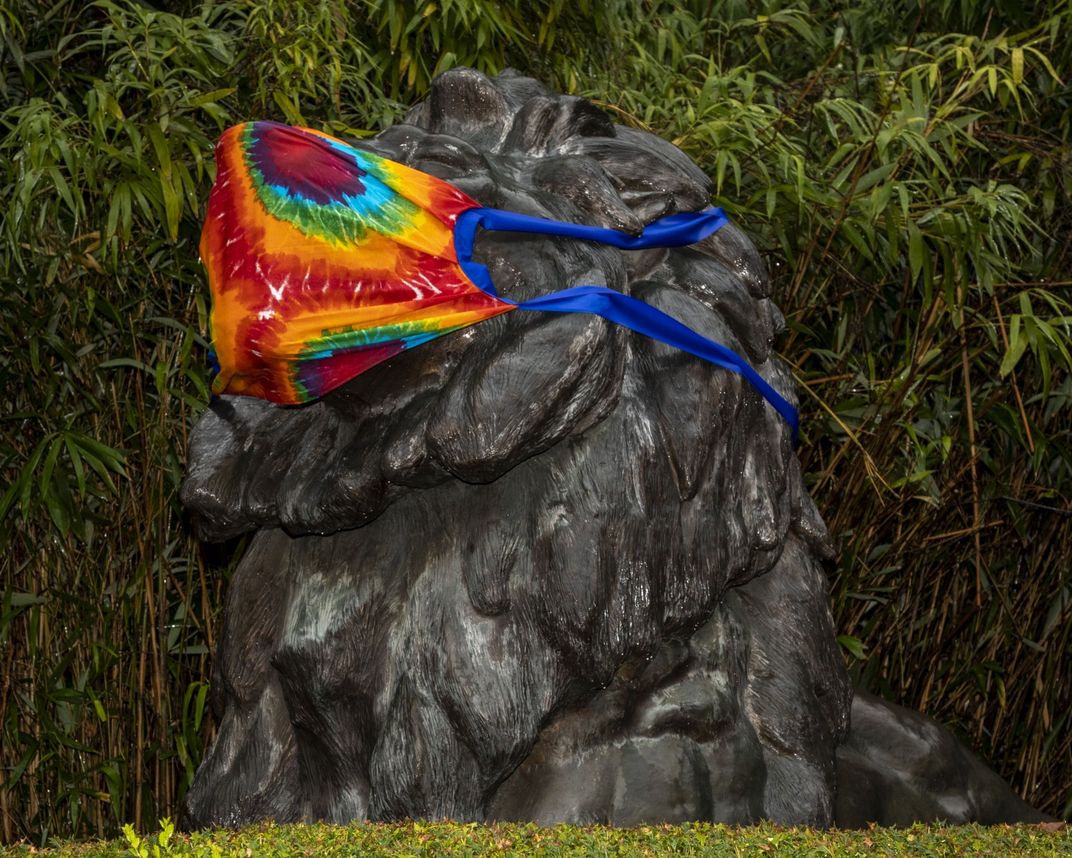
For Nancy Bechtol, the director of Smithsonian facilities who oversees the safety office, the COVID-19 shutdown has offered a humbling reminder of the need to learn on the job and adapt to unprecedented circumstances. “Before this,” she says, “the longest Smithsonian museums had ever been closed to the public was 35 days during the 1995-96 government shutdown. We have no experience with such an extended months-long closure.”
She and her team members have been “attending as many webinars as we can” and researching nonstop to get a handle on how best to update safety and emergency management protocols while continuing to keep the museums clean and well-maintained. She’s had to work out how to keep the museums sanitary while minimizing staff contact; how to use signage to steer museum traffic in a way that is conducive to social distancing; how to decide which exhibition spaces are too confined to safely reopen; and even how to make restrooms safer for both guests and staff. From the installation of automatic doors and hand sanitizer stations to the appointment of mask checkers at entrances and throughout exhibition spaces, it’s an understatement to say Bechtol has had her hands full. “COVID is trumping everything else that we’re doing,” she says. “It’s all-encompassing.”
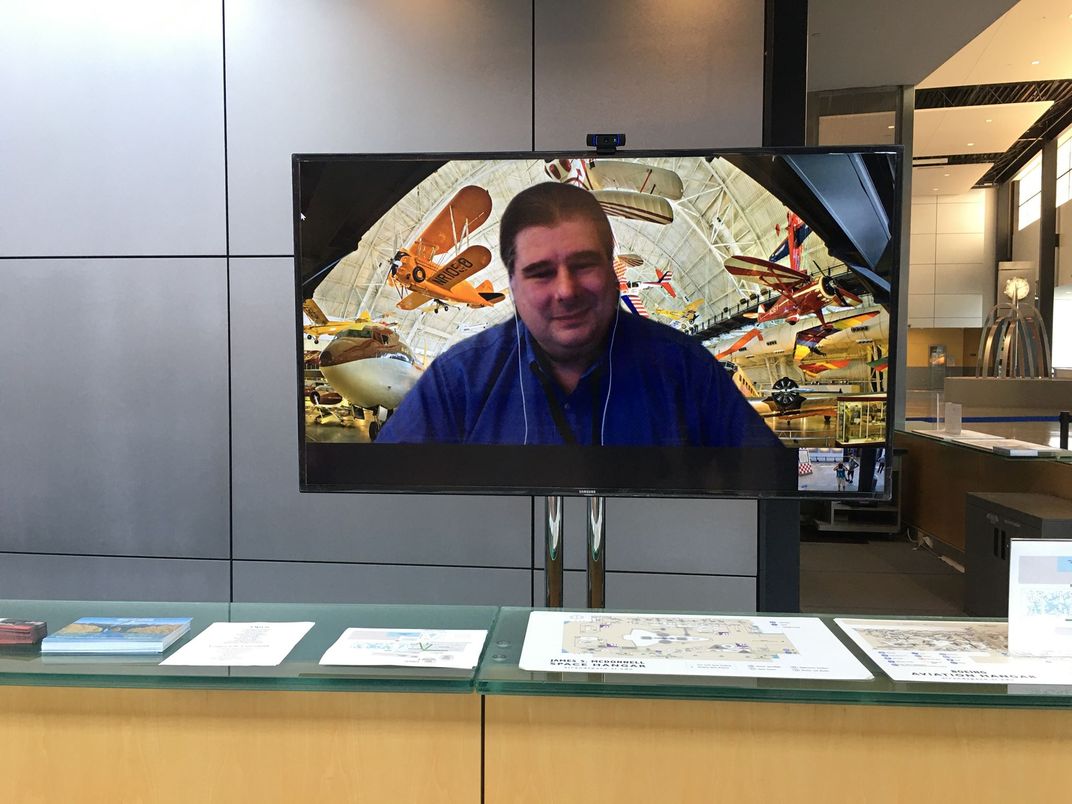
Adding to the challenge is the Smithsonian’s commitment to ensuring its various museums don’t backslide on their recent efforts to improve accessibility for visitors with disabilities. As Beth Ziebarth, director of Access Smithsonian, recently told The Washington Post, “Probably one of my biggest fears is that short-term strategies to preserve health and safety will become long-term strategies that will take away some of the gains we have made in accessibilities.” Removing tactile elements from exhibitions might be a necessary evil for now to check the spread of COVID, but in the long term such modes of engagement will need to come back for the sake of blind museumgoers. Similarly, facemasks on staff can alienate visitors with hearing impairments who rely on lipreading—Ziebarth is advocating for transparent masks to address this issue. One aspect of the COVID strategic pivot that Ziebarth sees as a positive for those with disabilities is the shift to digital content, which members of the public can access from their own homes and on their own terms. As she told NPR, “Virtual programs can provide fewer barriers.”
The Smithsonian safety office put together an invaluable pan-Institutional checklist on signage, hygiene, staff training and more that each museum must complete before reopening to the public. “It gave everyone a guideline,” Bechtol says. “And then we started these ‘walking tours’”—onsite surveys of each location’s progress shoring up safety. Recently, Bechtol has logged many hours at both Udvar-Hazy and the Zoo, touring the grounds, interviewing personnel, confirming the implementation of safety procedures and making sure everything from social distancing barriers to one-way signs on trails was in place as the two facilities reopened last week. The fact that the exhibits at the Zoo themselves contain living, breathing organisms susceptible to the virus posed additional challenges. “You have to be really careful with the animals,” Bechtol says, “to keep the public away from them.”
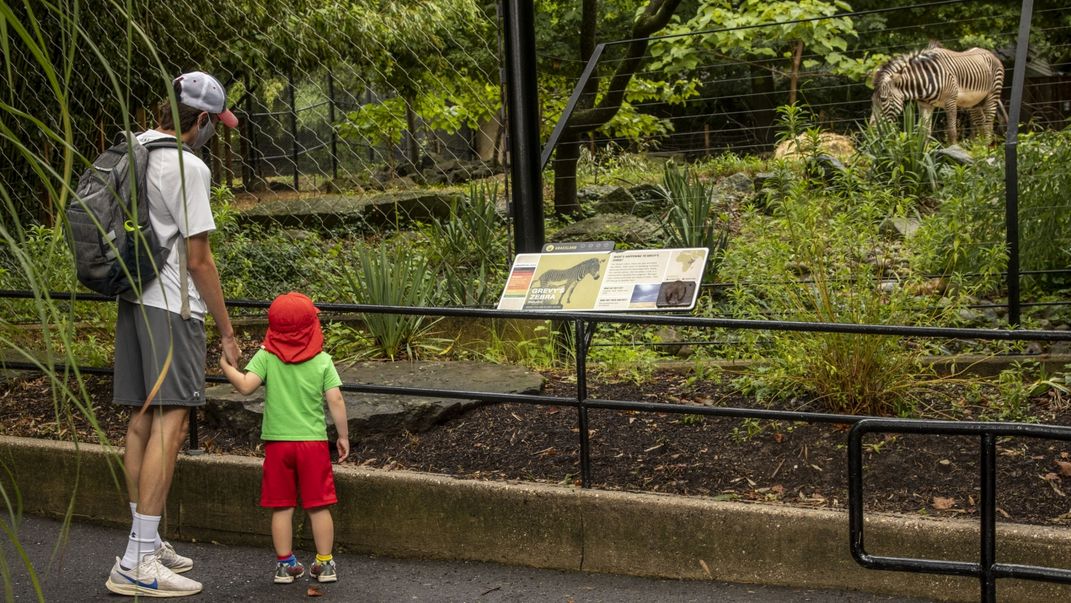
Beyond all these responsibilities, Bechtol is also overseeing ongoing Smithsonian construction projects and taking care to ensure those employees are safe as well. “We’re working harder than ever before,” she says. “We’re inventing how to manage COVID.” But she’s taken each new hurdle in stride and maintained a sense of calm determination throughout the grueling process. “It’s been pretty exciting, in a way.”
Mike Reese, director of operations at the Smithsonian’s Office of Protection Services (OPS), views the challenges of the COVID era in terms of the individuals involved—the “boots on the ground,” as he puts it. By way of example, he notes that criminal attempts to breach Smithsonian museums digitally and physically have not died down due to COVID, and that Smithsonian personnel are very much still needed to keep those sites secure. The Smithsonian has always been an obvious target for hackers and old-fashioned burglars, and those threats persist, pandemic or no. It becomes a question of working smarter and safer. “We’ve become innovative in our staffing,” he says, “streamlining it” to ensure safety while continuing to get the job done. This has meant strategic shift adjustments and frequent consultation with Smithsonian medical reservist Anne McDonough to minimize the risk of transmission.
This approach is especially important when it comes to reopening museums to the public. “No mask, no entry” is a guiding tenet. And it is incumbent upon the Smithsonian’s 6,000-plus employees, Reese notes, to take precautions at home and in their communities, as well as during the workday. “If you practice social distancing and perfect hygiene at work but not at home,” he says, “it’s a moot point, because you’re bringing that to work with you.”
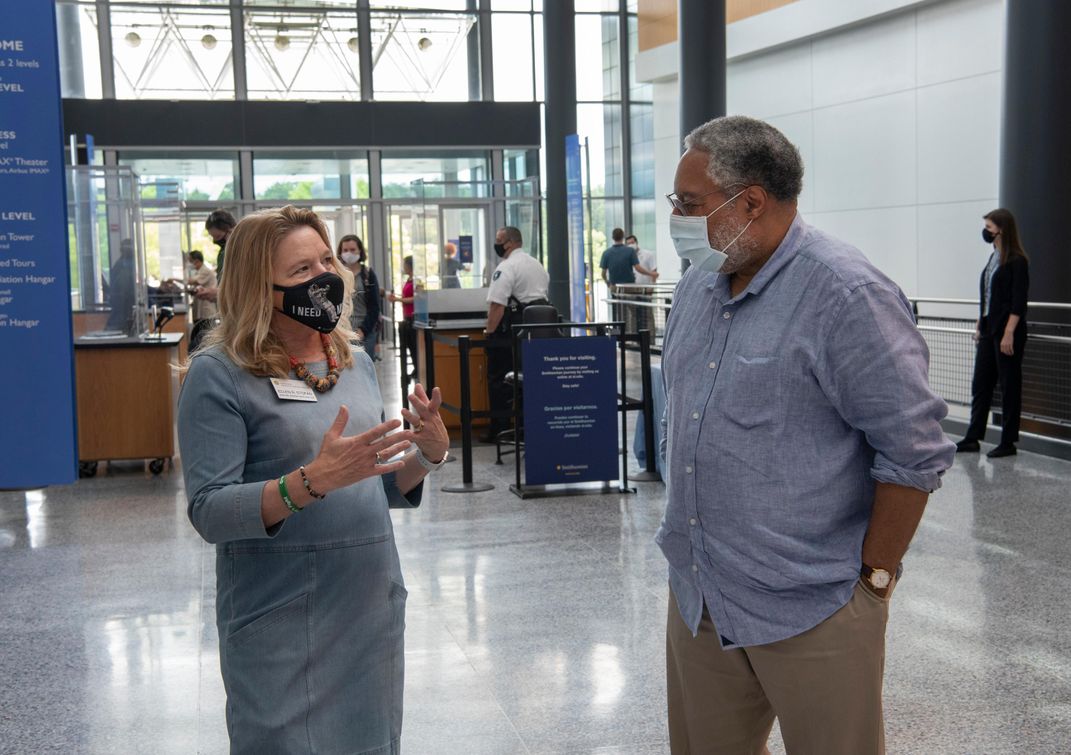
Likewise, it falls to members of the public to assess their own behavior honestly and judge whether attending a Smithsonian museum or any other local or regional museum would be a responsible decision on their part. Across-the-board safety is only possible if everyone plays their role.
Many U.S. museums, says Elizabeth Merritt, have responded to the COVID crisis with heartfelt creativity, like Bentonville, Arkansas’s Crystal Bridges Museum of American Art, which Merritt explains “commissioned art from local artists meant to be displayed outside hospitals and senior living facilities.” This crisis, she says, has led to a fundamental rethink on the purpose of these cultural landmarks—to the cultivation of a “broad-minded and generous approach to being a museum.”
But with smaller budgets and a lack of federal support, many of America’s museums have had to come up with their own scrappy innovations to stay afloat and keep their publics engaged. Merritt says strategies have ranged from remote museum tours given by robots to online auctions, virtual summer camps, and, in the case of zoos and aquaria, even “animal cameos” on conference calls. “Fiona the Hippo [of the Cincinnati Zoo and Botanical Garden] can join your staff meeting on Zoom,” she says.
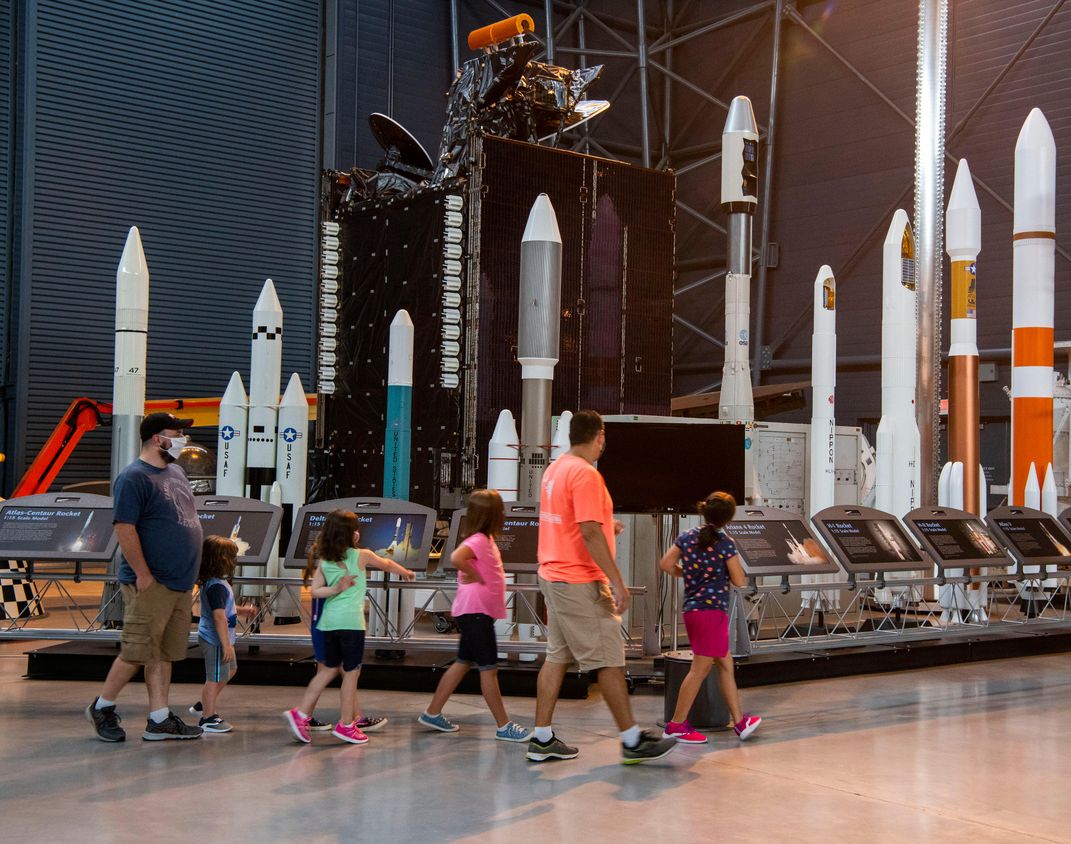
How can members of the public support their favorite museums in this trying time? Merritt says the first step is acknowledging museums are in trouble in the first place—recent data has shown that more than half of Americans “aren’t concerned about the survivability of museums,” she tells me. The second step is being willing to chip in financially to support the institutions closest to you personally. “If you’re thinking about how to spend your local experience money,” Merritt advises, “maybe spend it on museums.” Every contribution matters.
Merritt hopes the example set by the Smithsonian’s COVID response can prove helpful to smaller museums around the nation and that the Institution can capitalize on its high profile to make people realize how important museums are in times of turmoil and encourage them to advocate for their local cultural institutions that may be struggling. “Even as trust in many traditional sources of information is in decline,” she says, “people still trust museums. The Smithsonian can use the power of that trust to help people deal with the pandemic.”
Implementing all of the novel safety measures demanded by the COVID era has posed challenges to pretty much everyone working at the Smithsonian, but the adaptation process has also led to some exciting positive outcomes likely to endure past the eventual end of the crisis. One such upshot has been an increase in digital fluency across the board at the Smithsonian, and a realization that telework is in many cases a smarter option than reporting to a building every day. “Everyone’s getting well-versed in different ways to communicate,” says Reese. “I don’t think we’ll ever go back to how things were traditionally.”
This increase in overall digital literacy has also accelerated the Institution down a path it was already on towards digitizing its collections, curating virtual exhibitions, providing educational resources to teachers nationwide, and heightening online engagement with the public in general. Those who visit the museums in person each year comprise but a small sliver of the audience the Smithsonian seeks to reach. “The public is not just downtown Washington, D.C.,” says Bechtol. “It’s everywhere.”
Today, the websites of Smithsonian entities ranging from the museums to the research and education centers to the Smithsonian Libraries offer fully digital online exhibitions. The Natural History Museum has a page devoted to virtual tours. And the Smithsonian’s Open Access project has made some three million (and counting) 2D and 3D assets from the Institution’s collections available for instant downloading and personal use. “The Smithsonian was a leader in the digitization of museum objects,” Merritt says, “and that’s a model many museums have emulated.” Yet additional work remains to be done, and the COVID crisis is catalyzing the shift. “Museums provide people with inspiration and solace,” she adds, and “with comfort, peace and contemplation” in the midst of tragedy. “And now we’re saying people can find those spaces digitally.”
“There’s incredible power in digital,” Stofan agrees. “How do we reach people beyond our walls? The Smithsonian is the nation’s museum.” She points to the recent digitization of the Air and Space Museum’s Sally Ride Papers and the enlistment of the general public in getting the scanned documents transcribed as a success story to be built upon in the months and years to come. “You have to bring history to life for people,” Stofan says. “People like Sally Ride can inspire a whole generation.” She also notes that digital outreach opens the door for unprecedented cross-museum collaboration. “The power of the entire Smithsonian collection can be brought together in a digital realm to tell richer, more diverse stories.”
In addition to bringing the members of the Smithsonian and its public closer together, the innovations of the past months have simultaneously bolstered solidarity within the Institution, normalizing teamwork and collective brainstorming where stovepiping once held sway. “This has proven that we can all work together, come to consensus, organize and work toward the greater good of the Institution,” Bechtol says. “We have to hold on to this.”
In the opening photo illustration, we selected a host of artifacts from the Smithsonian's Open Access offerings. Clockwise from left: Pocahontas by an unidentified artist, after 1616, National Portrait Gallery; Angel by Abbott Handerson Thayer, 1887, Smithsonian American Art Museum; Harriet Tubman by H. Seymour Squyer, c. 1885, National Portrait Gallery; Alexander Hamilton by John Trumbul, 1806, National Portrait Gallery; Cat in Eakins Yard by Thomas Eakins, c. 1880-1890, Hirshhorn Museum and Sculpture Garden; In the Sunlight by Childe Hassam, Hirshhorn Museum and Sculpture Garden, 1897; Keep Us Flying! by Betsy Graves Reyneau, 1943, National Museum of African American History and Culture; George Washington (Lansdowne Portrait by Gilbert Stuart, 1796, National Portrait Gallery; Owney the dog, c. 1885-1897, National Postal Museum; The Death of Cleopatra by Edmonia Lewis, 1876, Smithsonian American Art Museum; "Tian Tian," the Giant Panda, National Zoo, 2005; Ivory Figurine Pendant by a Lega artist, late 18th century, National Museum of African Art; Creeping Baby Doll Patent Model by George P. Clarke, 1871, National Museum of American History.
:focal(282x168:283x169)/https://tf-cmsv2-smithsonianmag-media.s3.amazonaws.com/filer/76/d5/76d569ee-2c38-4611-b1fa-b4fe7e1c7076/masks_mobile.jpg)
:focal(1439x395:1440x396)/https://tf-cmsv2-smithsonianmag-media.s3.amazonaws.com/filer/8e/32/8e3212b3-5a9a-41c5-80dd-98f07e1670a5/masks.jpg)
/https://tf-cmsv2-smithsonianmag-media.s3.amazonaws.com/accounts/headshot/DSC_02399_copy.jpg)


/https://tf-cmsv2-smithsonianmag-media.s3.amazonaws.com/accounts/headshot/DSC_02399_copy.jpg)